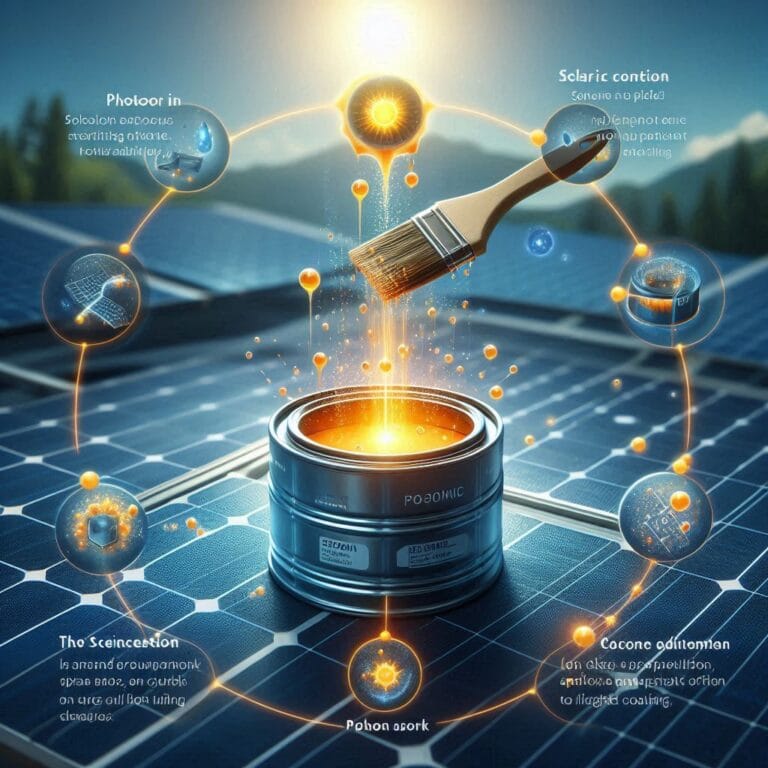🌊 Introduction: The Rise of Subsea Energy Storage
As the world races toward carbon neutrality, one problem continues to hold us back: energy storage.
Solar panels may generate power during the day, and wind turbines may spin at night, but what happens when the sun doesn’t shine or the wind refuses to blow? This inconsistency has made grid-scale storage the Achilles’ heel of even the most ambitious clean energy rollouts. Without a stable way to store excess electricity, renewable energy can’t fully replace fossil fuels. This is where a new innovation dives in—literally.

Introducing the Ocean Battery—a groundbreaking energy storage system engineered to operate beneath the seabed, offering a sustainable solution for storing renewable energy. Inspired by pumped hydro storage, but reimagined for the seabed, this cutting-edge technology stores energy by using pressure differences in underwater reservoirs. When power is abundant, it pumps seawater out of high-pressure bladders buried below the ocean. When energy is needed, water is allowed to rush back in, turning turbines and generating electricity.
Unlike lithium-ion batteries, which come with mining, fire risk, and recycling challenges, the Ocean Battery offers a sustainable, scalable, and eco-friendly alternative. It leverages the natural environment—no rare earths, no massive land use—while promising to help balance the grid without adding more emissions.
In an era where the global energy transition hinges on breakthroughs in storage, the Ocean Battery stands out as one of the most promising renewable energy storage solutions we’ve seen. It’s more than just a technological concept—it’s a practical answer to the growing need for clean, continuous power, especially for offshore wind farms and coastal renewable energy hubs.
⚙️ What Is an Ocean Battery and How Does It Work?
What if the ocean could work like a giant power bank, storing clean energy beneath the waves? That’s not just poetic metaphor—it’s the exact principle behind the Ocean Battery, a groundbreaking underwater energy storage system pioneered by Dutch startup Ocean Grazer.
At its core, the Ocean Grazer Ocean Battery functions much like a traditional pumped hydro system, but adapted for life on the seabed. Instead of dams and mountain reservoirs, it uses flexible bladders, concrete reservoirs, and seawater pressure—taking full advantage of the ocean’s natural hydrostatic force.
Here’s how it works step-by-step:
Charging the Battery (Storing Energy):
When there’s surplus energy—typically from offshore wind turbines or tidal generators—electric pumps push seawater out of flexible bladders that are buried under the seafloor. The water is moved into a rigid, concrete reservoir, creating a pressure differential between the two chambers.
Holding the Charge:
Once the seawater is displaced, the pressure remains stored in the system. Because of the surrounding deep-sea environment, this energy can be held without any loss for extended periods, making it an incredibly efficient form of long-term storage.

Discharging the Battery (Releasing Energy):
When the grid requires power, valves are opened, allowing high-pressure seawater to rush back into the empty bladders. This movement drives hydraulic turbines, converting the kinetic energy of flowing water into electricity—just like in a traditional hydroelectric dam.
This cycle is entirely mechanical, eliminating the need for chemical reactions or rare earth metals. That makes the Ocean Battery a clean, low-impact, and scalable alternative to lithium-ion storage.
One of the most compelling use cases for the Ocean Grazer Ocean Battery is in offshore wind farms. These turbines often generate more energy than needed during strong wind events—and not enough when the wind dies down. The Ocean Battery balances this out by absorbing excess generation and feeding power back into the grid when needed. Similarly, tidal power projects, which are predictable yet intermittent, benefit from this stable underwater energy reserve.
By placing storage close to where power is generated, Ocean Batteries reduce the need for large transmission infrastructure and help stabilize remote or island-based grids.
⚖️ Ocean Battery vs Traditional Energy Storage
As the global push for renewable energy intensifies, the demand for effective grid-scale battery solutions is exploding. But not all energy storage technologies are created equal. The Ocean Battery, a novel form of underwater energy storage, offers an intriguing alternative to more familiar technologies like lithium-ion, pumped hydro, and solid-state batteries.
Let’s break down how they compare across key performance and sustainability factors:
🔋 Lithium-Ion Batteries
How it works: Stores energy via electrochemical reactions in metal-based cells.
Pros: High energy density, quick discharge, widely available.
Cons: Relies on rare earth materials (like cobalt and lithium), fire risk, limited lifespan (1,000–3,000 cycles), and complex recycling.
❌ Environmental Impact: Mining for battery metals is energy-intensive and polluting.
🌊 Ocean Battery (Underwater Energy Storage)
How it works: Uses seawater and pressure differentials in seabed bladders to store and release energy, mechanically.
Pros:
- Fully mechanical—no chemical degradation.
- Lifespan: Over 25 years with minimal maintenance.
- No toxic materials or heat generation.
- Seamless integration with offshore wind and tidal systems.
Cons:
- Requires seabed engineering and marine-grade infrastructure.
- Currently limited to coastal and offshore zones.
✅ Sustainability: Ocean Battery offers a non-toxic, recyclable, and low-impact alternative for coastal nations.
🏔 Pumped Hydro Storage
How it works: Moves water between two elevations, generating power through turbines.
Pros: Proven technology, excellent for long-duration storage.
Cons:
- Requires significant land, elevation differences, and water sources.
- Environmental disruption from large reservoirs and dams.
- Not feasible in flat or densely populated areas.
🔧 Solid-State Batteries (Emerging Tech)
How it works: Uses solid electrolytes instead of liquids.
Benefits: Improved safety profile, increased volumetric efficiency, and superior energy density over traditional lithium-ion technology.
Cons: Still under development; expensive and untested at scale.
✅ Comparative Summary
| Technology | Lifespan | Eco Impact | Energy Density | Ideal Use Case |
|---|---|---|---|---|
| Ocean Battery | 20–25 years | ✅ Low | ⚪ Medium | Offshore renewables |
| Lithium-Ion | 5–8 years | ❌ High | ✅ High | EVs, home storage |
| Pumped Hydro | 30–50 years | ⚠️ Medium | ⚪ Medium | Mountainous regions |
| Solid-State | TBD | ⚪ Medium | ✅ High | Mobile & future grid applications |
⚠️ Challenges of Ocean Battery Deployment
Despite its many advantages, underwater energy storage faces some unique challenges:
- Infrastructure Cost: Initial deployment requires marine construction expertise.
- Location Constraints: Limited to areas with offshore renewable generation or shallow seabeds.
- Regulatory Hurdles: Marine zoning laws and environmental clearances can slow deployment.
Yet, as offshore wind scales up globally—particularly in Europe and Asia—these challenges are already being addressed by startups like Ocean Grazer, who are proving that sustainable grid-scale batteries don’t need lithium or land.
🚘 Fisker Ocean Battery: EV Innovation from the Sea?
Let’s clear the confusion right away:
The Fisker Ocean battery has no relation to the Ocean Battery technology developed by Ocean Grazer for underwater renewable energy storage.
So while the two “Ocean” batteries serve very different purposes—one powering the electric mobility revolution, the other stabilizing grid-scale renewable energy—both play a role in clean energy storage. Let’s dive into what makes the Fisker EV battery unique and where it fits in the broader shift toward sustainability.
⚡ Fisker Ocean Battery Specs: What’s Inside?
The Fisker Ocean, an all-electric SUV developed by Fisker Inc., features two battery options, both supplied by CATL (Contemporary Amperex Technology Co. Ltd.), one of the world’s largest EV battery makers.
Here’s a breakdown of the two main variants:
| Variant | Battery Type | Chemistry | Estimated Range (EPA/ WLTP) |
|---|---|---|---|
| Fisker Ocean Sport | LFP | CATL Lithium Iron Phosphate (LFP) | ~250 miles / ~400 km |
| Fisker Ocean Extreme/Ultra | NMC | Nickel Manganese Cobalt (NMC) | ~360–440 miles / ~580–707 km |
- LFP (Lithium Iron Phosphate): Offers excellent thermal stability, longer cycle life, and lower cost—but slightly lower energy density.
- NMC (Nickel Manganese Cobalt): Provides higher energy density, better range, but is more expensive and resource-intensive to produce.
Integrated into an aerodynamic SUV design featuring solar roof panels for auxiliary power, these batteries position Fisker at the forefront of sustainable and functional vehicle innovation.
🔄 Clean Energy Storage Meets Mobility
While the Fisker Ocean battery doesn’t sit on the ocean floor like the Ocean Grazer system, it contributes to the same global goal: decarbonization through smarter energy storage. EVs like the Fisker Ocean offer:
- Zero tailpipe emissions
- Flexible charging (home, solar, grid)
- Potential grid integration (V2G in future)
This aligns with the shift toward distributed energy ecosystems, where electric vehicles themselves act as mobile batteries—a concept growing in importance as solar adoption rises.
🏊 Suunto Ocean Battery Life: Diving Into Wearable Energy
The Suunto Ocean is a hybrid smartwatch and dive computer designed for adventurers who go from land to deep sea. It merges the functionality of Suunto’s high-end sports watches with robust diving tools—including dive profiles, GPS tracking, heart rate monitoring, and multiple underwater metrics.
But one key question divers and outdoor athletes often ask is: How long does the Suunto Ocean battery actually last?
🔋 Real-World Suunto Ocean Battery Life
Battery life in wearable devices is notoriously hard to pin down because it varies based on usage mode. Here’s a breakdown of how the Suunto Ocean battery life performs across different scenarios:
| Mode | Duration |
|---|---|
| Smartwatch mode | Up to 26 days |
| Dive mode | Up to 50 hours per full charge |
| GPS tracking (active) | Up to 60 hours (with low-frequency GPS ping) |
| Mixed training & diving | Around 1–2 weeks depending on activity level |
This performance makes it one of the more robust battery performers among underwater wearables—especially impressive given its vivid AMOLED screen and wide sensor suite.
☀️ Is It Powered by Solar or Kinetic Charging?
Unlike select Garmin and Casio devices, the Suunto Ocean is not yet equipped with solar or kinetic energy harvesting capabilities. Instead, it relies on efficient battery management and deep power optimization settings. That means no trickle-charging from the sun or motion—but you can conserve energy with:
- Adjustable GPS frequency
- Auto-brightness and dive display dimming
- Smart notification limits
- Customizable dive mode timeout
While kinetic charging is a compelling concept for dive computers, Suunto has prioritized stability, pressure resistance, and reliability over experimentation.
🌊 Applications & Future of Ocean Battery Technology
The Ocean Battery is more than just a cool concept—it’s a potential cornerstone for the future of marine renewable energy. Its unique ability to store large amounts of power underwater opens up major opportunities in both commercial and public energy sectors.
⚓ Powering Offshore Infrastructure
Offshore structures like wind farms, tidal turbines, and oil rigs are often located far from centralized grids. Traditionally, they’ve relied on:
- Long underwater cables to bring power ashore
- Diesel generators for backup energy (which are noisy and polluting)
With Ocean Battery systems placed nearby, these installations gain:
- On-site energy buffering (store excess wind/tidal energy)
- Greater grid stability, especially during low generation periods
- Reduced dependence on fossil-based backups
For example, in high-wind conditions at sea, turbines often overproduce. An Ocean Battery can soak up that surplus, then feed it back when the wind dies down—creating a stable, predictable energy flow.
🏝️ Enabling Remote and Island Grids
For island nations and coastal communities, energy independence has long been a challenge. Diesel imports are costly, and grid extensions are impractical.
Ocean Batteries offer:
- Scalable energy storage built into local marine ecosystems
- 24/7 power availability from wind or wave generators
- Long-term decentralized microgrid development potential
🔮 The Future: A Decentralized Oceanic Grid?
Underwater energy storage is guided by a forward-looking strategy aimed at revolutionizing how we store renewable energy. As offshore renewables become more common and battery prices fall, the Ocean Battery could:
- Decentralize grid infrastructure with localized sea-based nodes
- Reduce strain on terrestrial land used for solar farms or battery banks
- Facilitate the creation of floating energy hubs that combine wind, wave, and advanced battery technologies.
Backed by innovations in marine engineering and sustainable materials, Ocean Battery tech may soon become as essential as the turbines and panels themselves.
🌊 Challenges and Considerations
While underwater energy storage like the Ocean Battery holds immense promise, transitioning this innovation into mainstream deployment presents a set of complex technical and environmental challenges. Understanding these hurdles is key to scaling sustainable energy innovation responsibly.
💸 High Initial Cost of Deployment
Currently, the technology is at a nascent stage in terms of market adoption and scalability. Major cost factors include:
- Marine engineering for seabed anchoring, pressure housing, and turbines
- Logistics of offshore transport and installation
- Specialized equipment for subsea excavation or stabilization
Although long-term savings on fossil fuels and reduced carbon emissions may offset these costs, upfront investment remains a barrier—especially for low-income regions or early adopters.
✅ Insight: Cost optimization is expected over time as economies of scale kick in and more companies enter the marine storage space.
🐠 Potential Marine Environmental Impact
Introducing artificial structures into delicate marine ecosystems requires caution. Some key concerns:
- Disruption to seafloor habitats during installation
- Electromagnetic fields (EMFs) potentially affecting marine species
- Risks from leakage or mechanical failure in sensitive zones
However, some experts argue that well-designed Ocean Battery modules can mimic artificial reefs—potentially enhancing marine biodiversity if deployed with care.
✅ Best practice includes environmental impact assessments (EIAs) before installation, and continuous ecological monitoring during operation.
🧂 Saltwater Maintenance and Corrosion Challenges
Saltwater is notoriously corrosive, and operating sensitive mechanical and electrical systems underwater adds new maintenance complexities:
- Structural wear from biofouling and saline erosion
- More frequent need for seals, coatings, and replacements
- Costly underwater servicing that requires ROVs (Remotely Operated Vehicles) or dive teams
To counter this, Ocean Grazer and similar innovators use composite materials and sealable, modular designs that allow selective retrieval and service—minimizing total downtime.
🌎 Conclusion: Why the Ocean Battery Matters Now
The global race to decarbonize energy is accelerating—but intermittency from renewables like wind and solar remains a massive challenge. Enter: underwater energy storage as a silent hero beneath the waves.
By recapping the breakthroughs explored in this blog:
- Ocean Grazer’s Ocean Battery provides sustainable, grid-scale buffering for offshore power
- Fisker’s EV battery represents clean mobility innovation
- Suunto Ocean’s wearable tech offers glimpses into micro-scale, user-facing energy storage
Together, they reflect how energy innovation is moving across scales—from the personal to the planetary.
The Ocean Battery, in particular, stands out as:
- A novel approach to renewable energy storage solutions
- A bridge between offshore wind farms and consistent electricity flow
- A scalable concept that fits the energy decentralization trend
As nations invest in blue economy strategies and coastal resilience, technologies like the Ocean Battery will become core infrastructure, not niche innovation.
✅ Final Takeaway:
Underwater energy storage isn’t just a scientific curiosity—it’s a pragmatic step toward energy equity, climate resilience, and infrastructure innovation. And it’s rising from the depths, just in time.
🌊 Curious about other cutting-edge energy solutions?
Don’t miss these deep dives into future-forward technologies:
-
Body Energy Harvesting – Discover how the human body can power wearable tech and beyond.
-
Liquid Trees: Revolutionising Urban Air Purification – A green innovation purifying air using photosynthetic microalgae.
-
Thermal Battery – Explore how heat can be stored and converted into clean, reliable energy.
-
Gravity Battery: Sustainable Energy Storage – Learn how lifting and lowering weights can store renewable power.
-
Dark Oxygen: Mining Seabed for Battery Materials – A look at the mysterious elements found in ocean beds and their role in energy tech.
Stay informed and inspired—because the future of energy is already here.






